Ryoji MIZUNO, Yoshinori KAMIYAMA and Takashi FURUKAWA
Classification
1 - C
In the in-service inspection for nuclear power plants, flaw detection and sizing are mainly conducted by ultrasonic testing (UT). In UT for austenitic welds like stainless steel and Ni-based alloy, the flaw detection and sizing in the austenitic weld are generally hard challenge because of spurious echoes by scatter of the ultrasonic wave on the columnar crystal and the fusion boundary and the curve of ultrasonic beam by acoustical anisotropy and so on.
Thus, the UT inspectors are required to have high level skill to classify these echoes. So the UT training is important to maintain and improve the skill. For the effective training, many samples are need with a variety of flaw characteristics and size. However, it is difficult and costs too much to prepare such many samples with the flaw as planned.
Supposing the UT simulation can reproduce the ultrasonic wave propagation behavior, the simulated data can be used as the virtual data for the UT training. The UT simulation is one of the best tools to investigate optimization of the UT condition and evaluation method of UT results. On the UT simulation for the austenitic welds, direction of ultrasonic wave propagation has been reproduced using hexagonal crystal model regarding columnar crystal structure as texture. However, the scatter from the columnar crystal boundaries cannot be reproduced well by the simulation. In this study, modeling the columnar crystal structure is investigated to improve the precision on the UT simulation.
Modeling the columnar crystal structure is important to reproduce the scatter and the attenuation form the columnar crystal boundaries on the UT simulation. But, it is difficult to simply model the shape and the crystal orientation of the real columnar crystal of weld metal. The simple prediction method for columnar crystal of weld metal is investigated using the method for cast structure, which calculates heat conduction and solute diffusion by a deterministic method (difference method), and nucleation and nuclear growth by a probabilistic method (Monte Carlo method). Also the crystal orientation for the crystal growth direction is simulated. Fig.1 shows an example of the solidification simulation results.
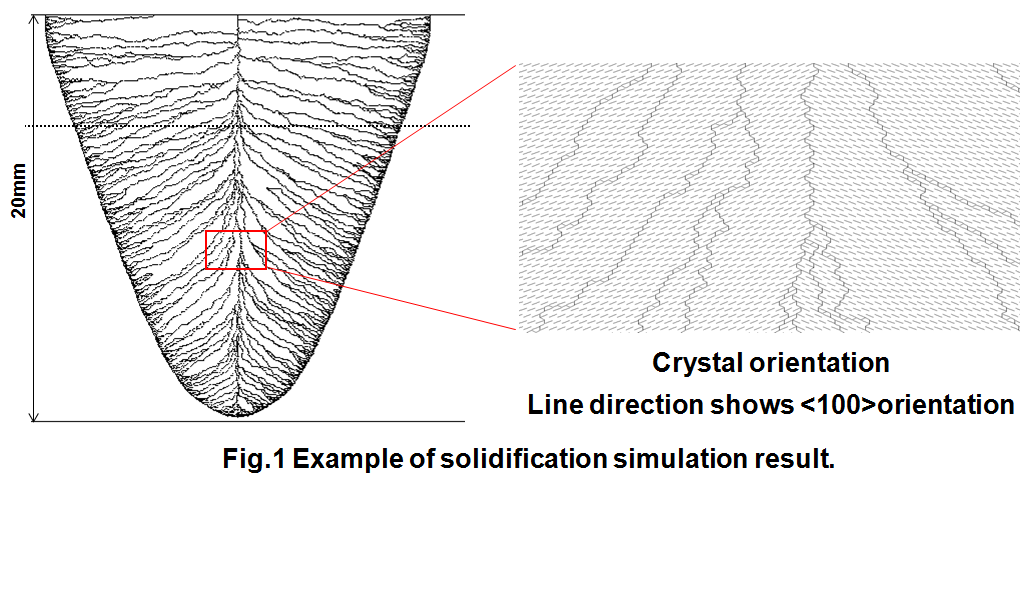
The UT simulation modeled using the result of the solidification simulation shows that attenuation and scatter of ultrasonic wave at the boundary of the columnar crystal are reproduced by using cubic crystal model.
It is considered that the simple prediction method of columnar crystal structure specialized for UT simulation is available as model for the UT simulation.
- (1) Components:
Vessel, Piping
- (2) Location:
Weld joint
- (3) Materials:
Austenitic stainless steel, Ni-based Alloy
- (4) Condition:
anywhere
- (5) Others:
Two dimensional simulation
- (1)• Solidification simulation
-
Modeling the shape and the crystal orientation of the columnar crystal structure is important to improve precision of the UT simulation. The simple model for columnar crystal of weld metal is investigated using a model for cast structure suggested by the Zhu et al [1], which calculated heat conduction and solute diffusion by a deterministic method (difference method), and nucleation and nuclear growth by a probabilistic method (Monte Carlo method). Also the crystal orientation for the crystal growth direction is simulated.
This model predicts the shape of columnar crystal and the <100> crystal orientation for the growth direction because columnar crystal preferentially grows to <100> orientation. However, substructure like cell and dendrite are not taken into account because it is considered that they are not influenced the ultrasonic wave propagation.
The solidification simulation is conducted on cooling process for region heated more than melting point for austenitic stainless steel of Fe-18%Cr-8%Ni with lattice spacing 250m and hexagonal Monte Carlo cell size 50m corresponding to grain size of base metal shown in Fig.2. 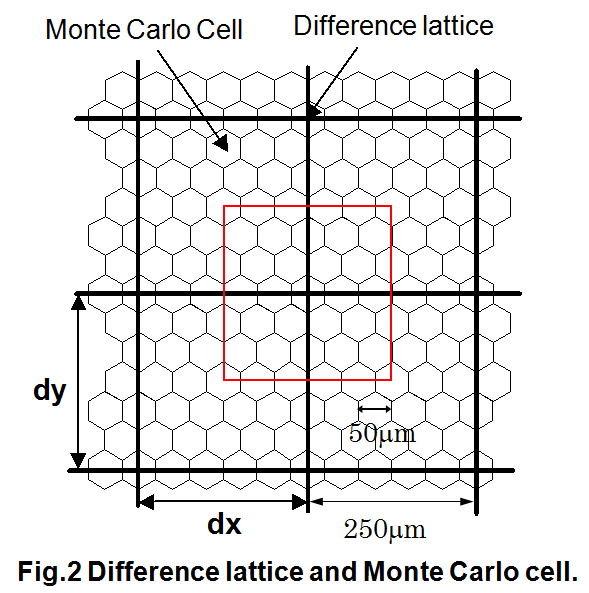
Fig.3 shows the result of the solidification simulation for a dissimilar metal weld joint of PWR reactor vessel outlet nozzle. Butt welds, buttering and cladding are separately simulated and superposed. Thus, it is possible to predict the dissimilar weld join, and the wavy fusion boundary by controlling the heat input.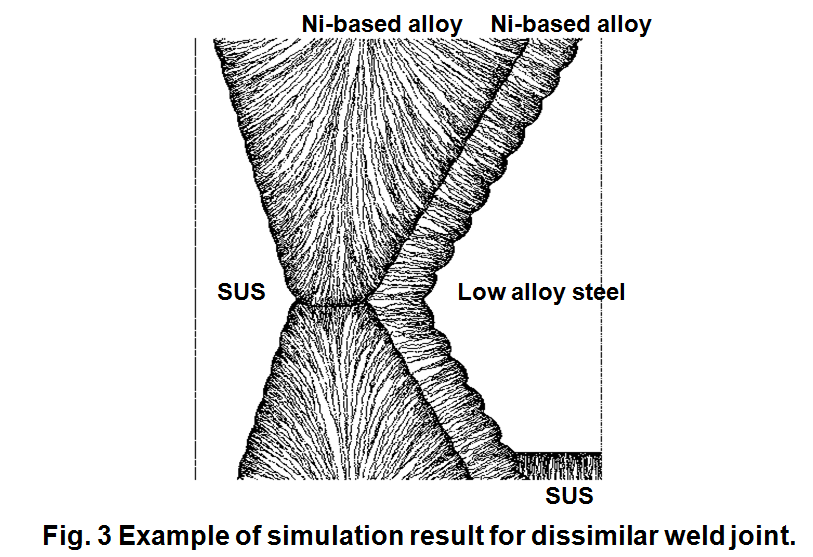
- (1)• UT wave propagation simulation
- UT simulation is carried out using ComWAVE (ITOCHU Techno-Solutions Corporation). The shape and crystal orientation of columnar crystal by the solidification simulation and the elastic stiffness are set in the UT simulation. Table 1 shows the elastic stiffness of austenitic stainless steel [2]. Cubic and hexagonal model as crystal model are simulated. Fig. 4-1 and Fig.4-2 show the wave propagation and Fig.5 shows A-scan display by the UT simulation. Cubic model shows the scatter from the boundary and higher attenuation compared with hexagonal model. Cubic model is better used for the UT simulation.

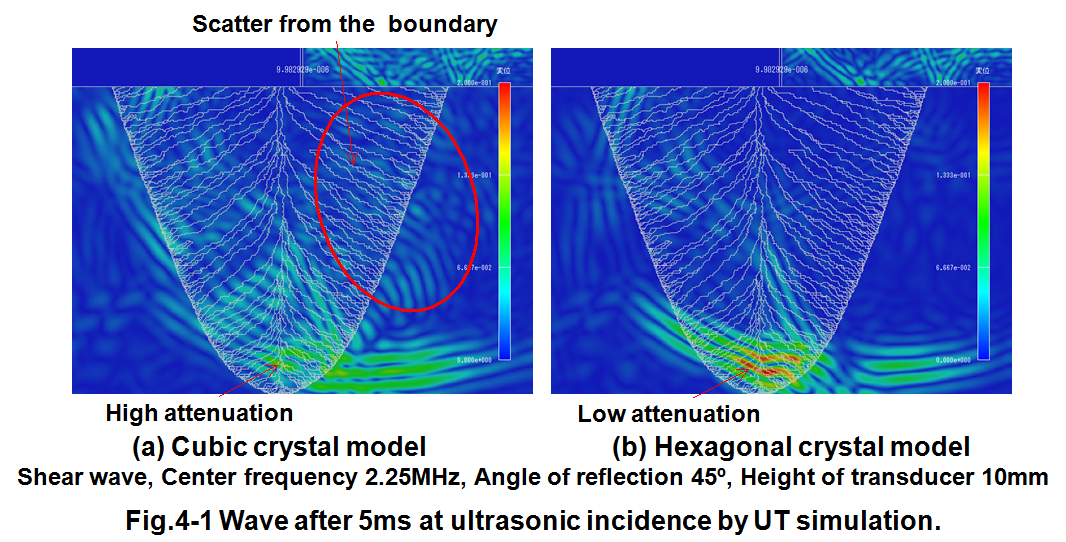
-
- Fig.4-2 (a) Cubic crystal model (b) Hexagonal crystal model
- Presently, Defect model is investigated to improve further the precision of the simulation.
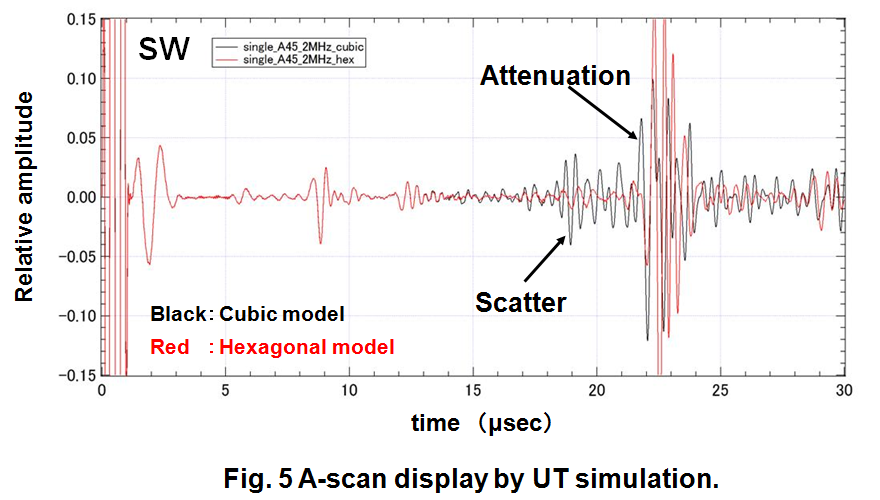
5. Examples of Application
- Virtual UT training
For UT training, we are investigating the virtual UT training simulator using the UT simulation data. 3 dimensional data are needed for the simulator assumed automatic UT. 2 dimensional simulation data are constructed to 3 dimensional data shown in Fig. 6. Fig. 7 shows A, B, C and D scope images constructed to 3 dimensional data. These images are same as the display for the automatic UT. Also it is considered that only A scope image and the position of probe are useful for manual UT training.
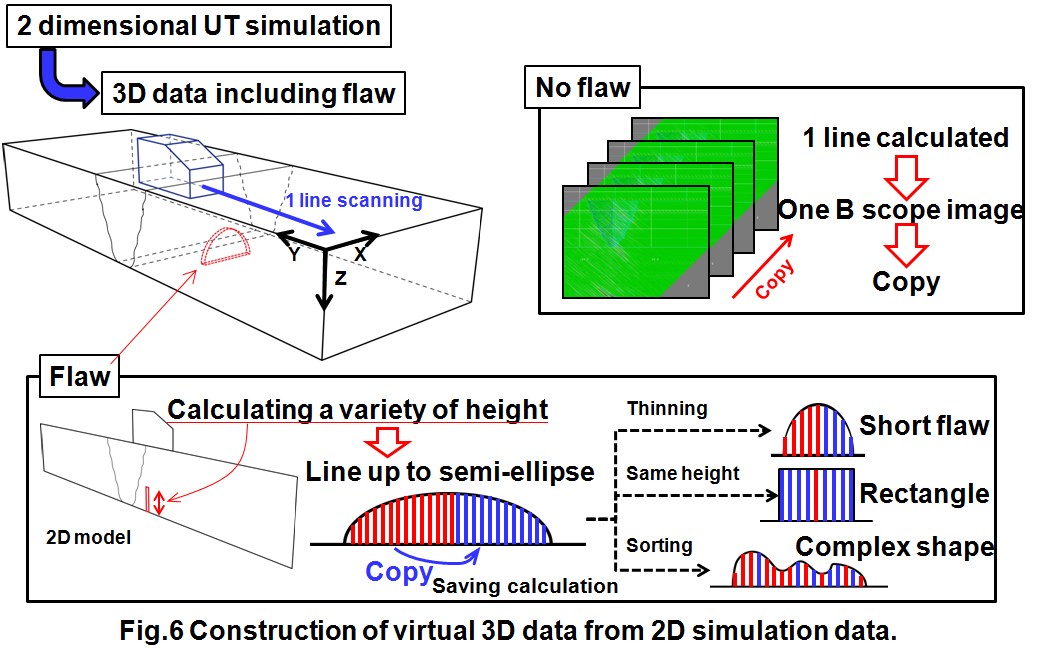
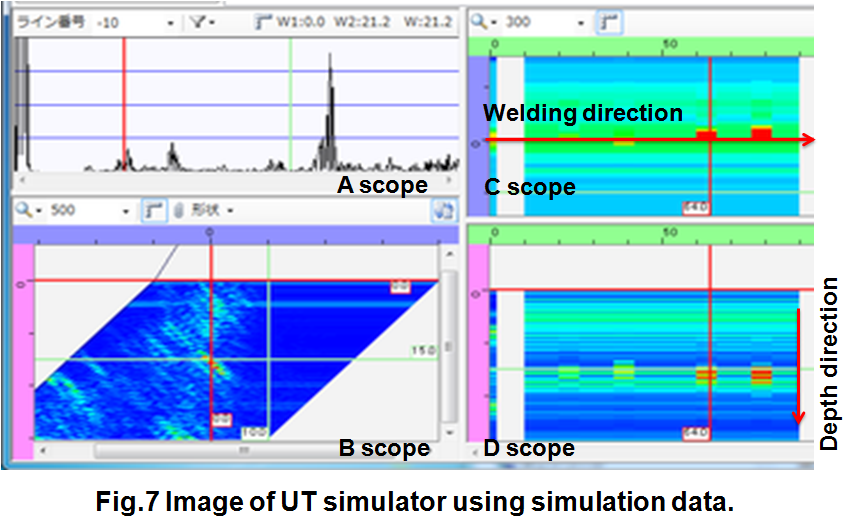
6. Reference
- (1) P. Zhu and R. W. Smith, “Dynamic simulation of crystal growth by Monte Carlo method-II. Ingot microstructure”, Acta metal. Mater., Vol. 40, No. 12 (1992) p.3369
- (2) J. A. Ogilvy, “An iterative ray tracing model for ultrasonic nondestructive testing”, NDT & E International Volume 25 Number 1 (1992) p.3
- (3) R. Mizuno and T. Furukawa, “Prediction method and modeling of columnar crystal structure in austenitic weld metal for UT simulation”, Proceedings of the 21th Symposium on Ultrasonic Testing (2014) p.185 (in Japanese)
- (4) R. Mizuno, Y. Kamiyama and T. Furukawa, “Modeling of Columnar Crystal Structure in Austenitic Weld Metal for UT simulation”, Proceedings of the 22th Symposium on Ultrasonic Testing (2015) p.59 (in Japanese)
- (5) T. Furukawa, Y. Kamiyama and R. Mizuno, “Virtual UT Training using UT simulation data”, Proceedings of the 22th Symposium on Ultrasonic Testing (2015) p.43 (in Japanese)
Japan Society of Maintenology (ejam@jsm.or.jp)



